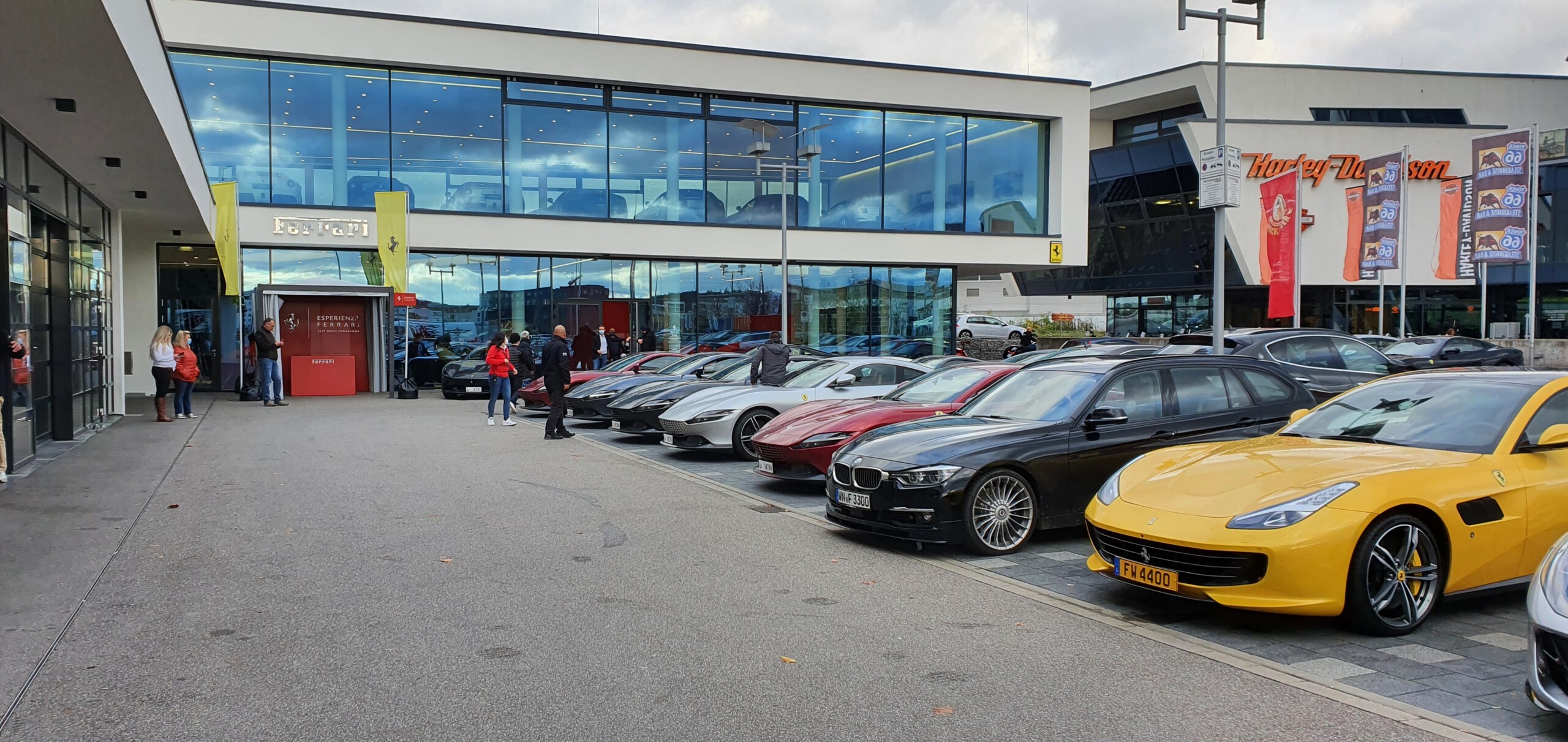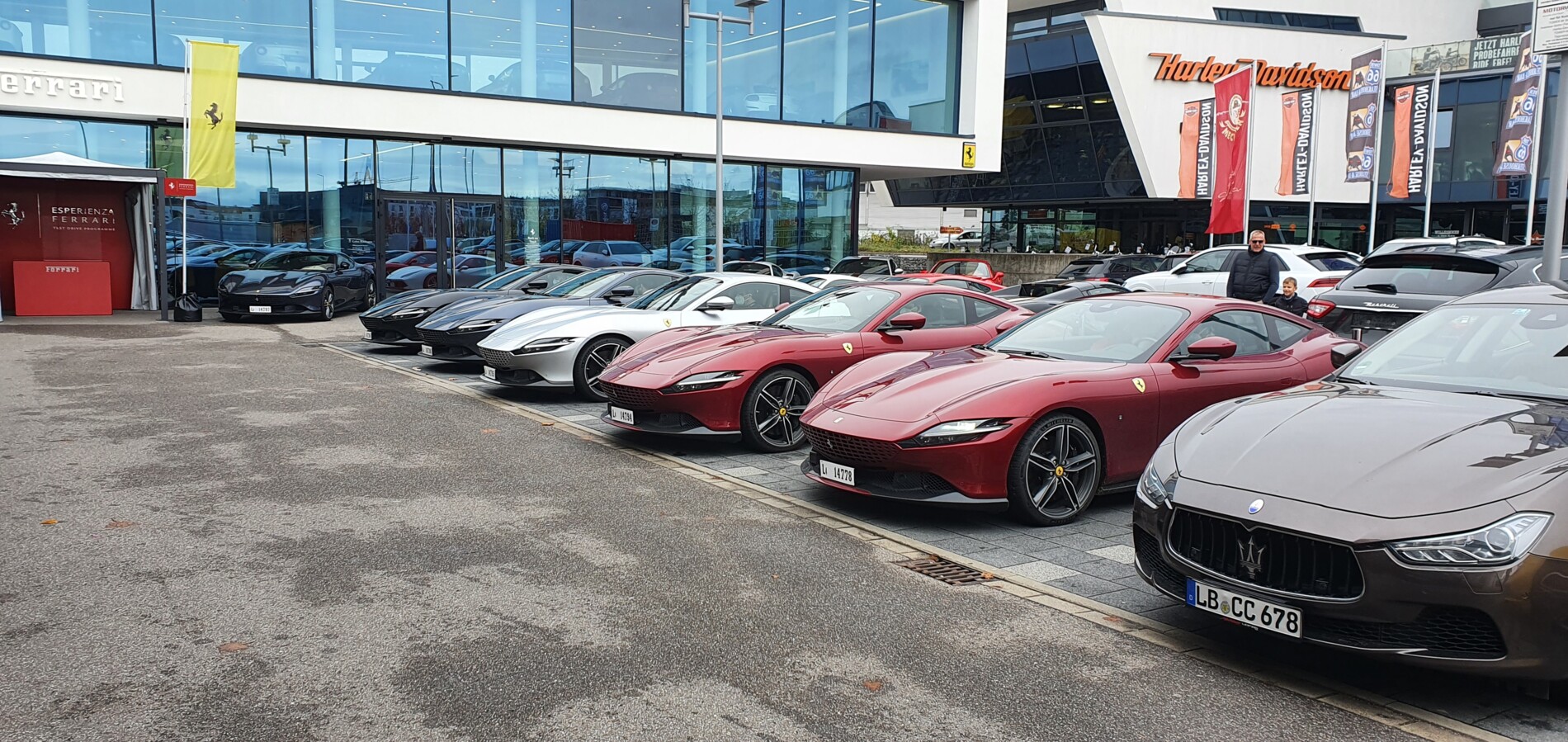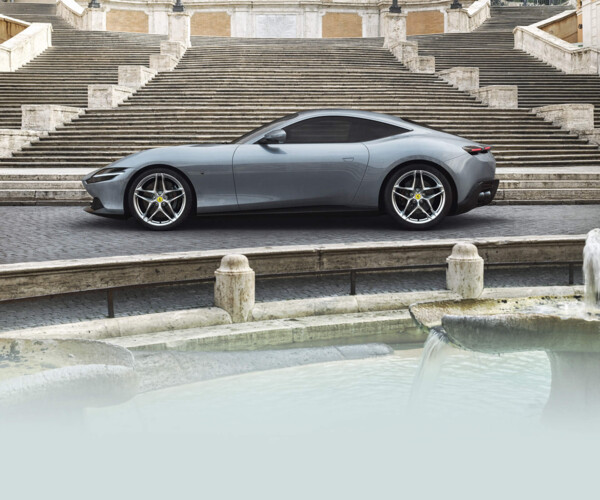It's the end of October, the lockdown is already just around the corner and we're preparing for a quiet time. But then Ferrari quite spontaneously comes up with the idea of making their latest four-seater GT available for a test drive at Gohm in Böblingen - the Ferrari Roma. We do not hesitate and accept the invitation of the Motorworld Region Stuttgart to the Ferrari Driving Experience.
We receive a friendly welcome under strict hygiene regulations. In the showroom we catch a brief glimpse of the new bolide while we move with the group to the presentation room next door. After a short introduction, the image video for the Ferrari Roma follows directly - "La Nouva Dolce Vita", the "carefree pleasurable lifestyle in Rome of the 1950s and 60s" according to Ferrari. This is followed by instruction in the correct hand position on the steering wheel and the perfect racing line on the track. The first words spoken in English by my Italian instructor are very fitting, as he immediately emphasizes the two faces of the Roma - relaxed cruising on the one hand, and the thoroughbred sports car on the other.
We leave the room and stand directly in front of the five Romas brought directly from Maranello, all in different colors and finishes. Mine is painted in the color "Blu Roma," inspired by the night sky over Rome. When I first look at the car, a mixture of Aston Martin DB11 and McLaren immediately pops into my head. But the longer I look at it, the clearer its independent design becomes. I try in vain to name a direct predecessor when I am asked to give my thoughts on the design - because there is none. One could now name the Portofino as an open predecessor, but it's not that simple, because according to Ferrari, about 70% of the parts on the Roma are new.
The yellow emblems with the Cavallino Rampante on the fenders have to be chosen as an extra, without them the Roma is almost in camouflage mode from the side. And that is exactly the goal according to my co-driver today, the Ferrari should not be immediately recognizable as one, but only inspire with its design and be identified as a Ferrari at second glance.
I open the door and see an interior unknown to me in a Ferrari. Clear, tidy, stylish and modern, with a full instrument panel and a large touchscreen in the center.
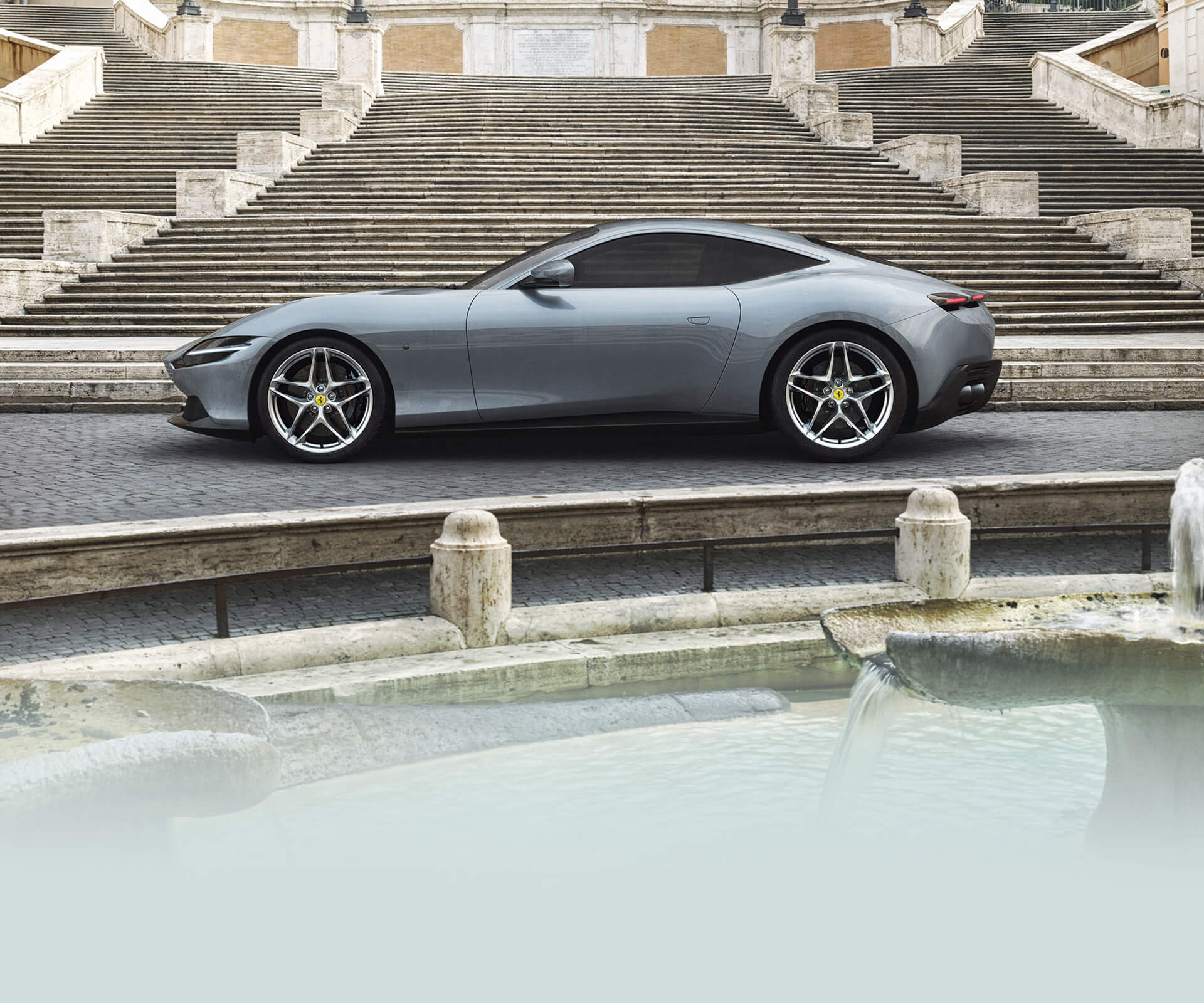
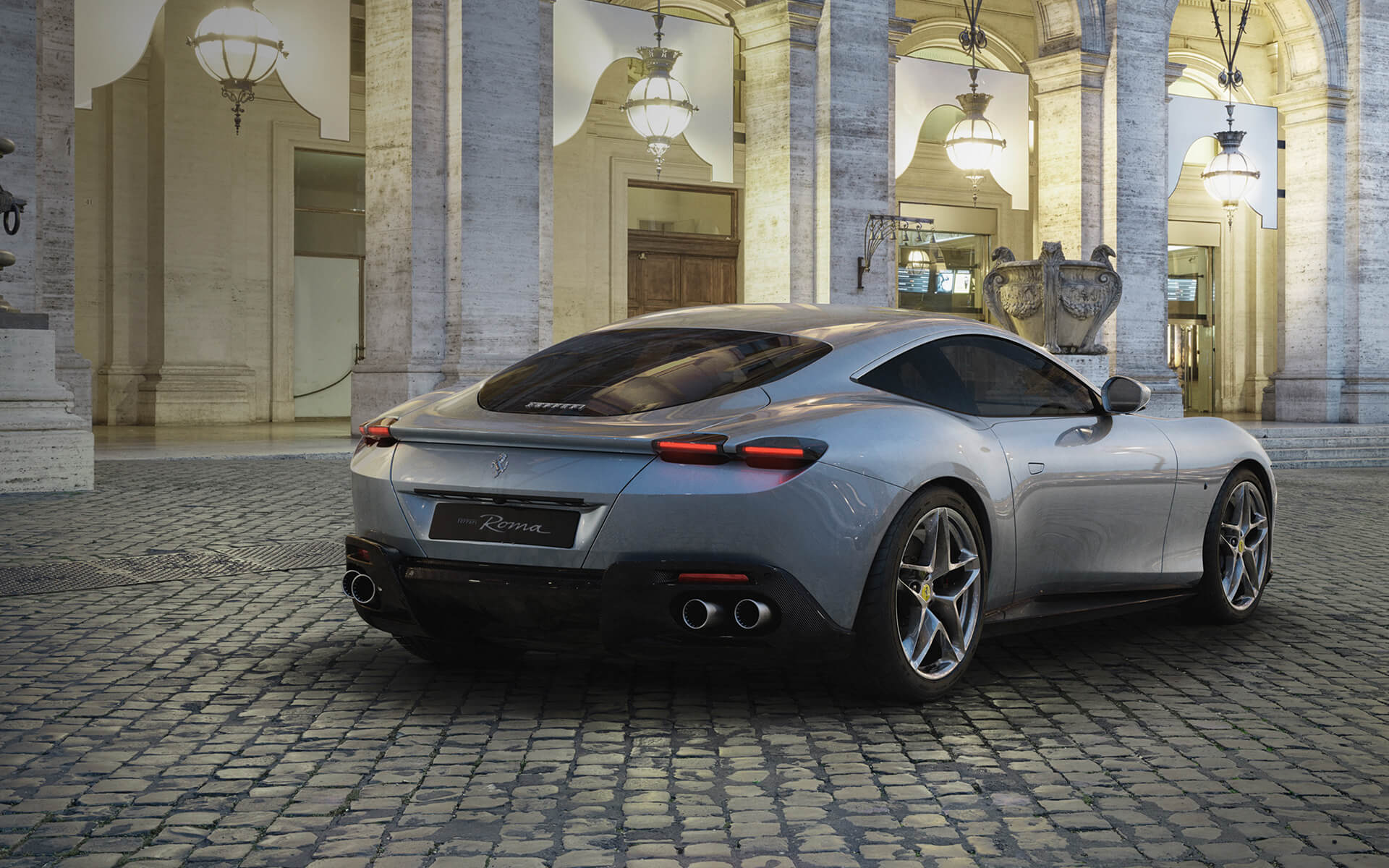
The first few kilometers are followed by a flood of information about the touch system on the steering wheel and in the center, all the comfort functions, driving modes, display settings, individualizations, climate settings, seat adjustments and all the other functions that I can hardly concentrate on driving and almost took the next speed camera with me.
Enough of that. We're on a quiet country road out of town, now we're driving - sport mode, shift to manual, 1st gear, 3000 rpm, full throttle. This is followed by a beastly drive, which, due to the lack of a gearshift indicator, is interrupted by the limiter a few moments later for a brief moment before I pull the right rocker and the arrow-quick 8-speed Getrag transmission engages the next gear. Every command is accepted with almost no delay, even multiple upshifts or downshifts. In Sport mode, the gear changes are a bit too jerky for me; Comfort mode does a better job.
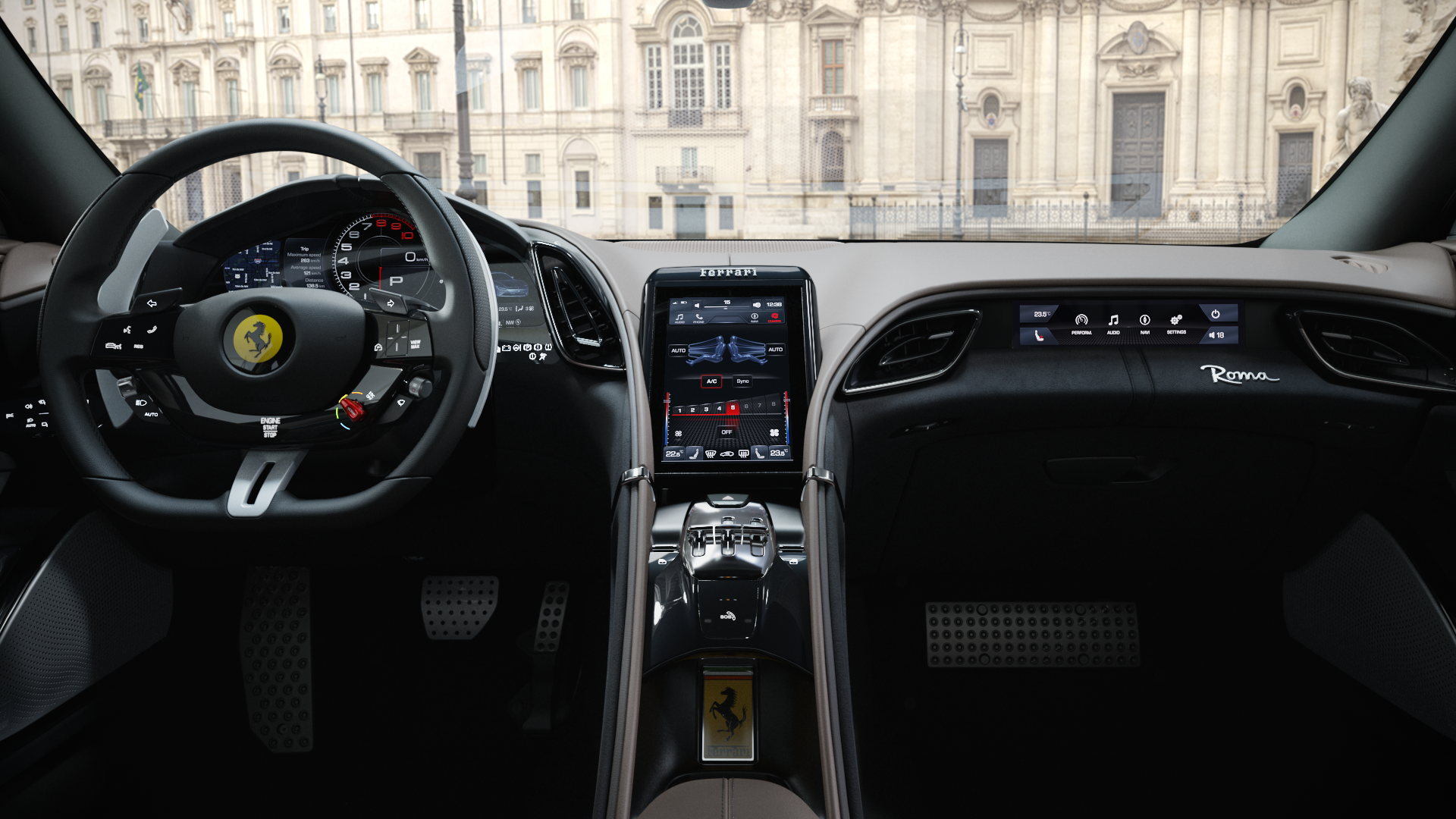
Below that is a suggested H-curtain, which contains the switches for the various transmission options. Then there's the optional display for the front passenger, with which he can control certain functions, such as the audio system.
I take a seat in the comfortable, fully adjustable seat. I look in vain for the red start button on the steering wheel. There are no "real" switches, levers or buttons in the Roma outside the steering wheel except for the transmission and the window lifters, which seems a bit strange to me as a classic car enthusiast.
Finally, I find the somewhat inconspicuous touch surface under the Ferrari logo with the inscription "Engine Start/Stop". Two presses (unfortunately without haptic feedback) and the 3.9 liter V8 biturbo comes to life. Not with a roar, as many of the Italian models like to do, but with a superior, muffled sound.
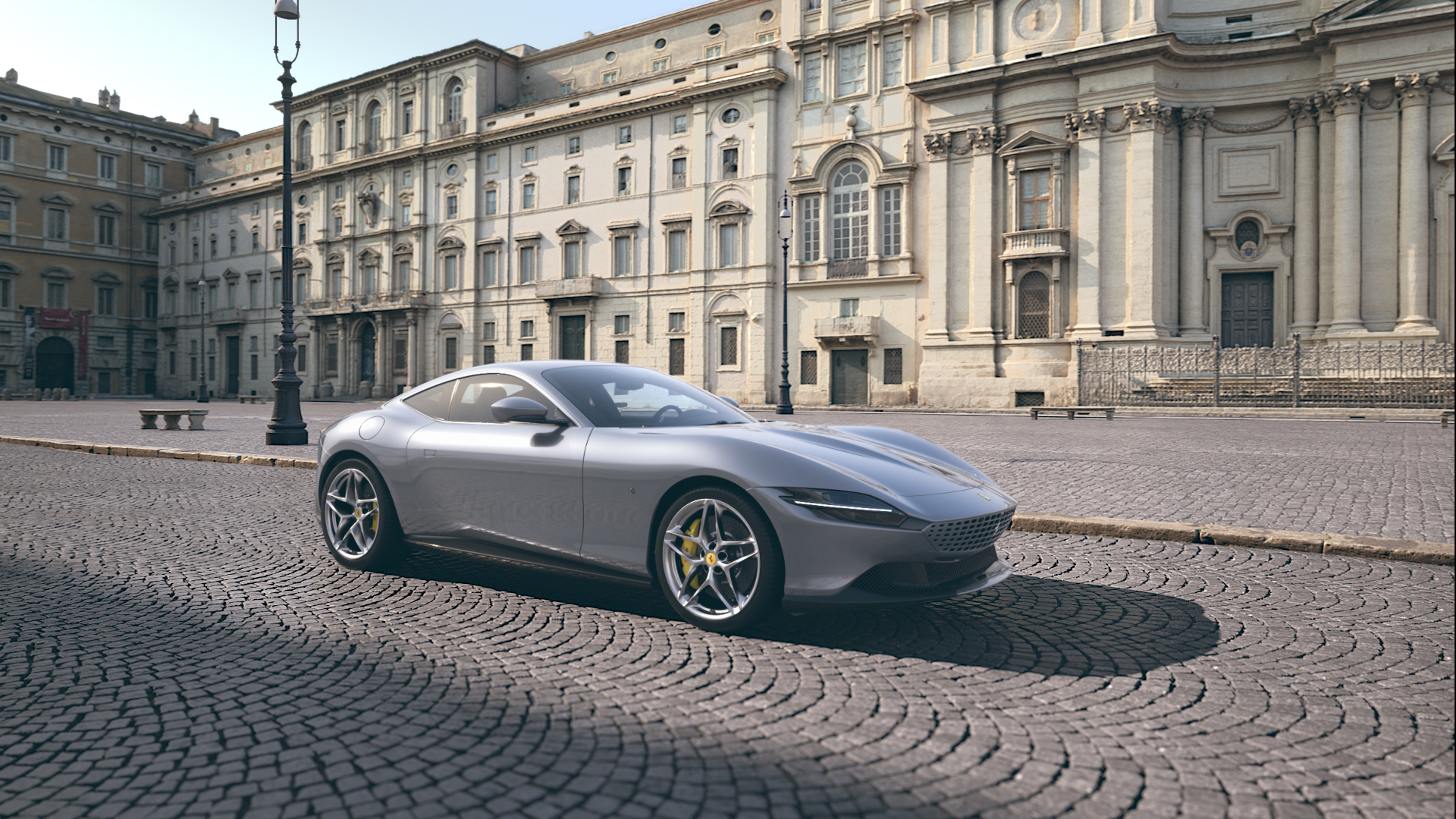
In the rearview mirror, the spoiler suddenly extends as a warning and reminds me of the applicable speed limits. Brakes with great control (ceramic as standard) provide the necessary deceleration and ensure that my driver's license stays in my pocket longer.
The engine comes from the 3.9-liter V8 biturbo family, which has won the "International Engine of the Year" award since 2016. First it was the engine from the Ferrari 488 GTB with 669 hp, later that from the F8 Tributo with 720 hp and most recently in tamed form from the GTC4 Lusso T with 610 and the Portofino with 620 hp respectively, which has now also found its way into the Roma.
I immediately believe the stated 3.4 seconds from 0 to 100. Even at around 1500 rpm, the power is directly available without any real turbo lag. This partly gives the impression that we are dealing with an original naturally aspirated engine with significantly more displacement.
The torque, which is fully applied from 3000 to almost 6000 rpm, provides for easily controllable outbursts of the rear end, which are elegantly absorbed by the electronics if necessary, sometimes more sometimes less, depending on which driving mode is selected with the "Manettino" on the steering wheel. You can choose between Wet, Comfort, Sport, Race and ESC Off - unfortunately I'm not allowed to try out the last two today.
After experiencing the sporty face of the Roma, it's now time to experience the GT. With the Manettino set to Comfort, the transmission set to automatic, the heated seats on and relaxing music from the radio, we continue along country roads and through towns. It's noticeable that the exhaust doesn't have a flap, but gives a bassy concert in every mode. Will this get annoying on longer distances? I don't know, but I was able to enjoy it during the short driving time. The suspension comfort of the adaptive chassis is absolutely sufficient, at least for the partly mixed German roads. How it will be on the sometimes adventurous surfaces, for example in Italy, is another question. There is also a mode for bad roads in Sport mode, which corresponds to the harshness of Comfort mode.
Of the four seats, the two rear ones can only be used as luggage racks, which allows loading longer items such as skis or golf bags.
However, I don't last long in this relaxed driving mode. A little later, I switch the transmission back to manual and listen to the beautiful orgy of revs. In the curves, I miss the shift paddles attached directly to the steering wheel. In the 90° position, you always have to take one hand off the steering wheel, which is actually unacceptable for sporty driving. For maneuvering in manual, on the other hand, the fixed paddles are a blessing, as I experienced upon arrival at the Ferrari Gohm parking lot, when I pulled directly on the right paddle without thinking.
The conclusion:
With its unusual design for the traditional Italian brand, the Ferrari Roma is sure to land some new customers who were previously more at home with certain British brands. Although it is neither a pure GT nor a thoroughbred sports car, it nevertheless offers long-distance comfort and racetrack-ready driving characteristics paired with an excellent interior and state-of-the-art functions in an elegant dress. Whether this is worth the base price of a good €195,000 is something everyone should judge for themselves during a test drive.
© copyright | Photos: Ferrari
